Graphene has once again taken center stage in the world of physics. In a groundbreaking study published in Nature Physics (August 2025), researchers confirmed the quantized limit of conductivity in near-ideal graphene, solving a long-standing puzzle in condensed matter physics. This discovery not only reinforces theoretical predictions but also pushes graphene further into the spotlight as a material that bridges fundamental science with future technologies.
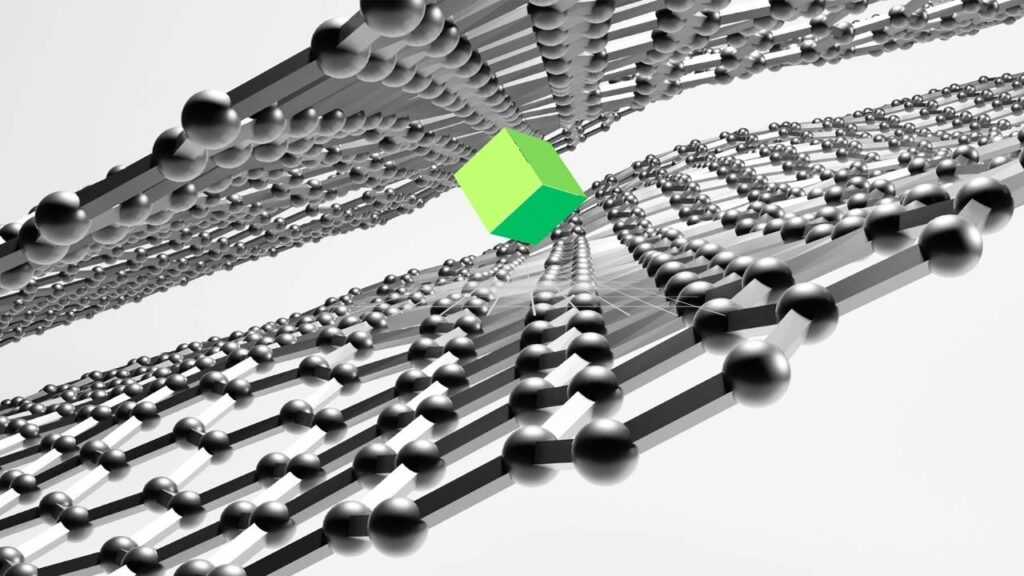
What makes this so exciting? Unlike ordinary metals, where electrons move like independent particles, graphene at its “Dirac point” behaves like a quantum fluid. In this state, researchers found that the electrical conductivity converges to a universal quantized value of about (4 ± 1) × e²/h—a number that remains consistent regardless of external conditions or device imperfections. This result confirms what physicists have suspected for years: that graphene, when ultra-clean, can act as a model system for testing the limits of quantum transport.
Table of Contents
Researchers Confirm Quantized Limit Of Conductivity In Near-Ideal Graphene
| Key Point | Details |
|---|---|
| Discovery | Researchers confirmed a quantized universal conductivity in near-ideal graphene, around (4 ± 1) × e²/h |
| Where Published | Nature Physics (August 2025) |
| Phenomenon | Graphene near its Dirac point behaves as a Dirac fluid, showing hydrodynamic flow of electrons |
| Law Violated | Strong violation of the Wiedemann–Franz law (thermal vs. electrical conductivity) |
| Applications | Could shape next-gen nanoelectronics, ballistic transistors, and quantum devices |
| Official Source | Nature Physics Journal |
The confirmation of the quantized limit of conductivity in near-ideal graphene is not just another academic achievement—it’s a leap forward in understanding how matter behaves under quantum rules. This discovery cements graphene’s role as both a scientific laboratory for testing high-energy physics ideas and a technological powerhouse for future electronics.
By proving universality in graphene’s conductivity, researchers have opened doors to new physics, advanced materials, and revolutionary devices. Whether you’re a curious student, a professional scientist, or a technology enthusiast, this breakthrough reminds us why graphene continues to be the “wonder material” of our time.
Understanding Graphene’s Quantum Behavior
What Is Graphene?
Graphene is a single layer of carbon atoms arranged in a honeycomb lattice. It is just one atom thick but stronger than steel, highly flexible, and extremely conductive. Since its discovery in 2004 (which earned the Nobel Prize in Physics in 2010), graphene has been hailed as a “wonder material” with applications ranging from flexible electronics to quantum computing.
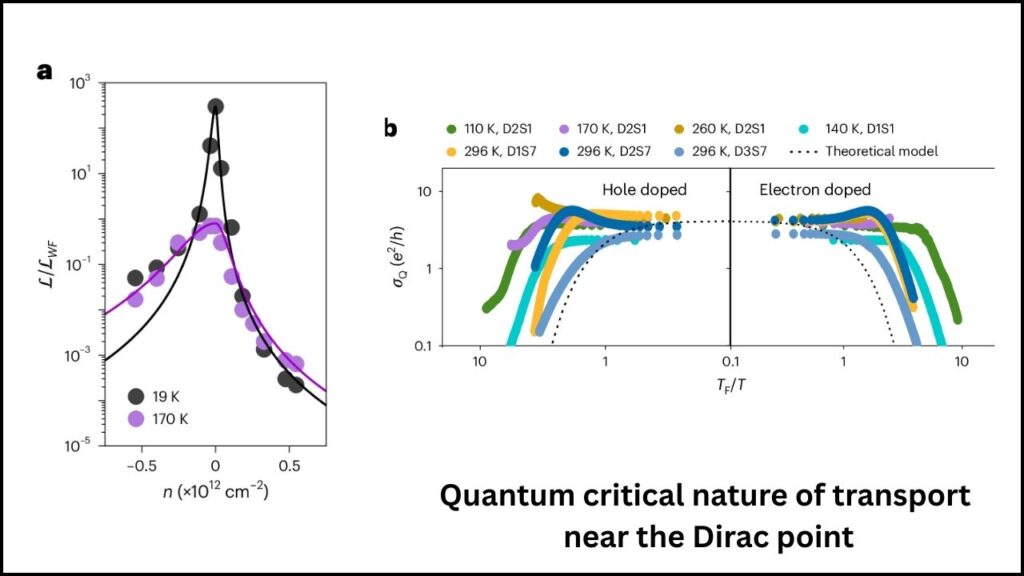
What Is the Dirac Point?
The Dirac point is a special condition in graphene where the number of electrons equals the number of holes (the absence of electrons). At this point, traditional band theory fails, and electrons behave as if they are relativistic particles, similar to photons moving at nearly the speed of light.
This makes graphene a playground for quantum physics, allowing scientists to test theories that are otherwise only found in high-energy particle experiments.
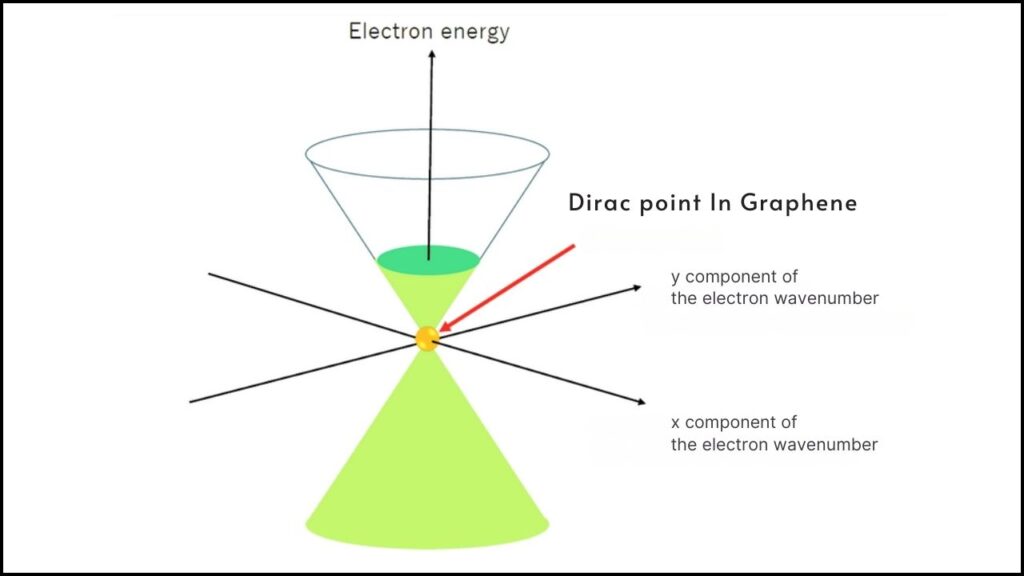
The Breakthrough: Quantized Conductivity
For decades, physicists debated what happens to graphene’s electrical conductivity when tuned exactly to the Dirac point. The new study provides the answer:
- Conductivity approaches a universal constant, around (4 ± 1) × e²/h.
- This universality is independent of impurities, making it a fundamental property of graphene itself.
This result is striking because in normal metals, conductivity depends heavily on scattering, temperature, and defects. Graphene, in contrast, seems to obey an intrinsic law of nature.
Why This Matters
1. Violation of Wiedemann–Franz Law
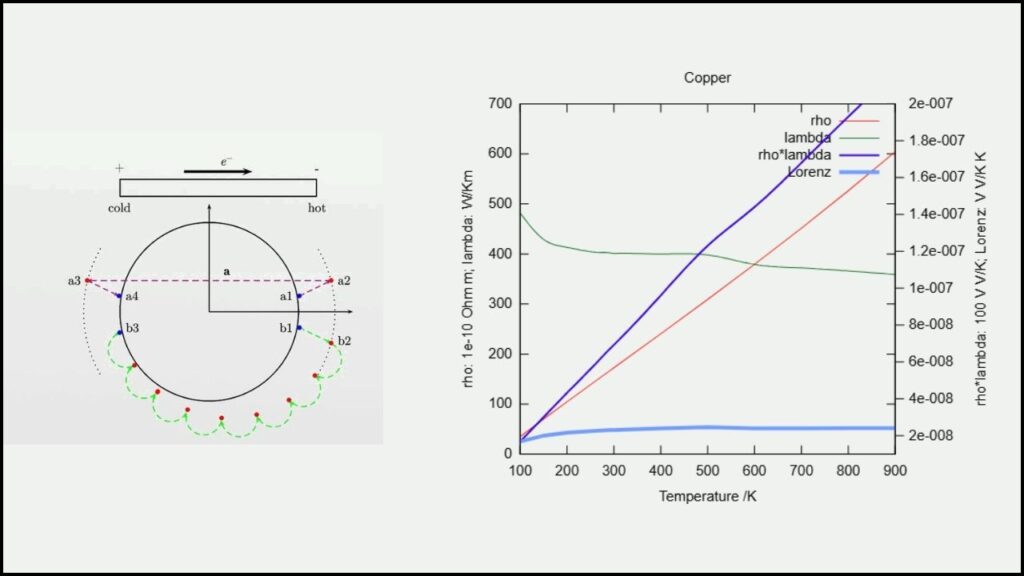
In metals, the Wiedemann–Franz law links electrical conductivity and thermal conductivity. But in graphene, researchers observed that the Lorentz number (which compares heat and charge transport) exceeded the classical value by more than 200 times.
This shows that electrons in graphene behave more like a fluid than individual particles, a regime physicists call the hydrodynamic limit.
2. Approaching the “Perfect Fluid” Limit
Another striking observation was the low viscosity-to-entropy ratio (η/s) of graphene’s electron fluid. In fact, it approaches the theoretical lower bound predicted by string theory and holographic duality (AdS/CFT correspondence).
This makes graphene not just a material for engineers, but also a laboratory for testing deep ideas from quantum gravity and high-energy physics.
3. Applications in Future Electronics
The implications of this discovery extend to technology:
- Ballistic Electronics: Devices where electrons flow without resistance.
- Quantum Computing: Graphene could serve as a platform for stable quantum devices.
- Nanoelectronics: Ultra-efficient chips operating close to theoretical conductivity limits.
Breaking It Down: How Researchers Did It
Step 1: Ultra-Clean Graphene Devices
Researchers used graphene encapsulated in hexagonal boron nitride (hBN), a technique that minimizes impurities and creates atomically smooth surfaces.
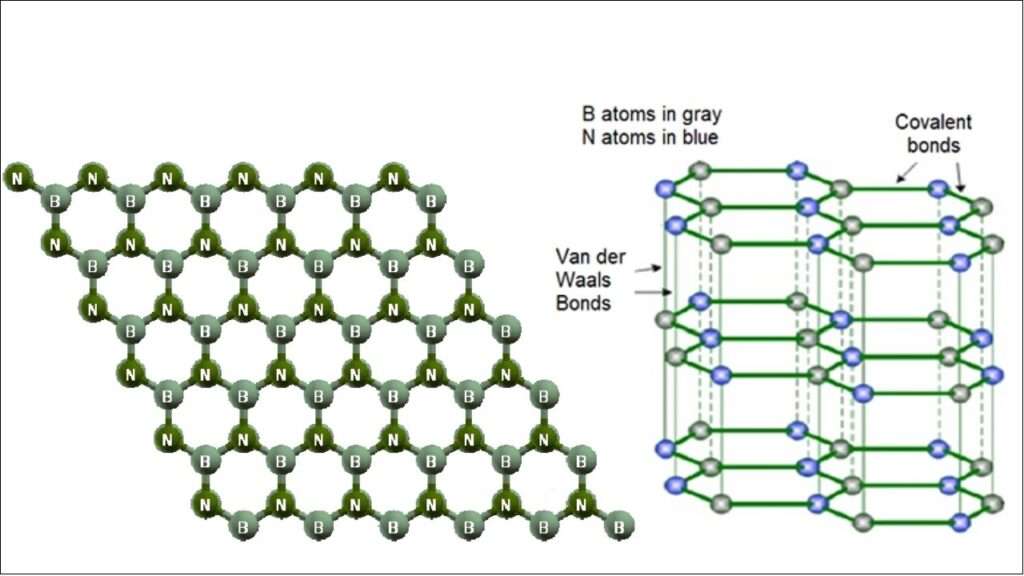
Step 2: Measuring at the Dirac Point
By tuning graphene to charge neutrality using gate voltages, they studied electron behavior under extremely controlled conditions.
Step 3: Observing Universal Conductivity
Across multiple devices and varying conditions, the same quantized conductivity value emerged, proving universality.
Step 4: Comparing Charge and Heat Transport
Simultaneous measurements of electrical conductivity (σ) and thermal conductivity (κe) revealed the inverse relationship predicted by hydrodynamic theory.
Practical Examples to Understand
Think of graphene like traffic on a highway:
- In a normal metal, cars (electrons) move independently and often crash (scatter), reducing flow efficiency.
- In graphene at the Dirac point, the cars act like a fluid river, flowing together with minimal resistance.
- The “speed limit” of this flow is quantized, meaning it has a fixed natural value—just like the speed of light is constant in physics.
Professional Impact
For researchers, this result is a milestone in condensed matter physics. It provides:
- Experimental proof of a theoretical prediction.
- A universal benchmark for quantum materials research.
- A testbed for interdisciplinary science, connecting quantum mechanics, fluid dynamics, and relativity.
For engineers, the discovery brings practical hope: designing electronic devices that leverage quantum hydrodynamic transport could result in faster, cooler, and more efficient electronics.
Scientists Trigger a Wild Quantum Switch in Exotic Material — Superconductivity Breaks the Rules
High-Tc Superconductivity in La₃Ni₂O₇: Why This Discovery Is a Milestone in Materials Science
Electric Field Trick Revealed That Can Instantly Switch Off Superconductivity
FAQs About Researchers Confirm Quantized Limit Of Conductivity In Near-Ideal Graphene
1. What does “quantized conductivity” mean?
It means that conductivity in graphene takes on a fixed, universal value, regardless of outside conditions.
2. Why is graphene different from ordinary metals?
In metals, electrons behave like independent particles. In graphene, especially at the Dirac point, they behave like a collective fluid with relativistic properties.
3. What is the significance of violating the Wiedemann–Franz law?
It proves that electrons in graphene do not follow classical transport rules. Instead, they show hydrodynamic behavior, revealing new physics.
4. Could this discovery lead to better electronics?
Yes. Understanding hydrodynamic transport can lead to low-resistance, high-speed devices, potentially reshaping electronics and computing.
5. Is this related to quantum computing?
Indirectly. While this doesn’t create qubits, it provides insights into quantum materials, which are essential for stable quantum technologies.



















